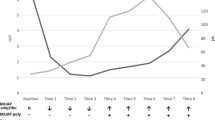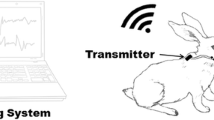Abstract
In a small number of patients treated with botulinum toxin (BT) antibody (Ab) formation occurs. Bt Ab can be detected by the mouse protection assay (MPA) or by the mouse diaphragm assay (MDA). Both methods, however, have major drawbacks. We tested a method for detecting BT Ab which measures the BT-induced reduction in the electromyographic amplitude of the mean maximal voluntary activation (M-EMG) of the sternocleidomastoid muscle. The M-EMG reduction was compared in 17 patients with cervical dystonia and secondary BT therapy failure to the M-EMG reduction previously measured in controls. Values more than 2 SD below the mean of controls were considered abnormal. Six patients showed BT Ab on the MPA and MDA; all of these had abnormal M-EMG reductions. Eleven patients showed no BT Ab on MPA and MDA testing; in ten of these the M-EMG reduction was normal, and in one it was pathological, but MDA testing later changed to positive under continued BT therapy. The sternocleidomastoid test is easy to perform and produces quantitative results. Since its sensitivity and specificity are at least as good as those of the MDA and the MPA, it can replace them.
Similar content being viewed by others
Author information
Authors and Affiliations
Additional information
Received: 5 August 1999¶Received in revised form: 24 February 2000¶Accepted: 18 March 2000
Rights and permissions
About this article
Cite this article
Dressler, D., Bigalke, H. & Rothwell, J. The sternocleidomastoid test: an in vivo assay to investigate botulinum toxin antibody formation in humans. J Neurol 247, 630–632 (2000). https://doi.org/10.1007/s004150070132
Issue Date:
DOI: https://doi.org/10.1007/s004150070132




